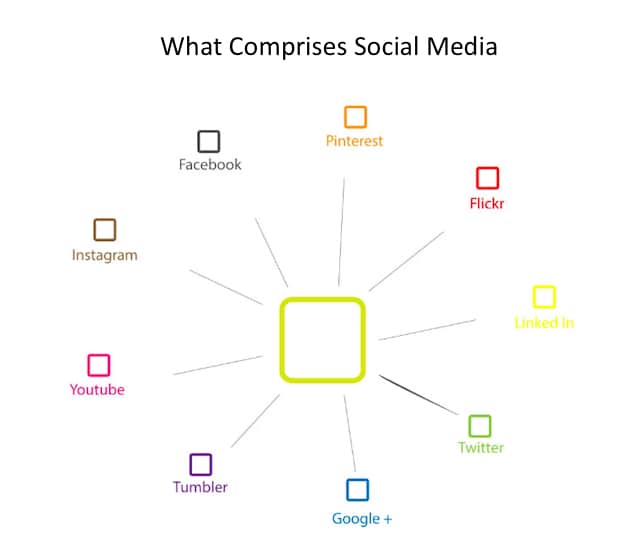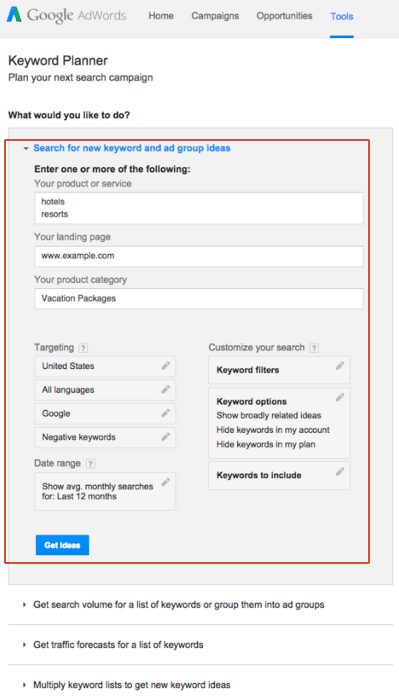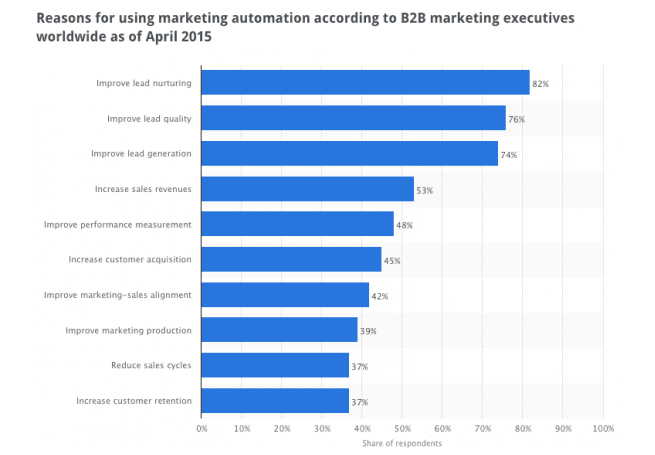Five Mistakes That Kill Your Lead Generation Strategy



For sales-driven companies that rely on qualified leads, lead generation is undoubtedly their bread and butter. In lead generation, becoming a powerhouse means having a solid strategy in place and sticking to it.
Lead generation is the very beginning of a person’s journey towards becoming a happy customer. But that’s only from your point of view. They don’t know they are there yet.

Image source: Support Bench
While having a lead generation strategy in place is critical to the growth of your sales, it is not the only thing that you need to succeed. Brands must also avoid the many mistakes along the way that can pretty much kill their lead generation strategy.
Just for a moment, forget about the basic mistakes, such as forgetting to add a call-to-action. This guide touches the various elemental but damage-inflicting mistakes that can render your lead generation strategy totally ineffective.
Committing these mistakes can ultimately lead to a waste of resources, energy, time and budget. Don’t be afraid, though. These mistakes are preventable. As long as you are aware of their existence before falling into their trap.
1. Ambiguity in your call-to-action (CTA)
When language is said to be ambiguous, it means that the information is open to more than one interpretation. It might have a double meaning, and at times, be entirely unclear.
The ambiguous language mostly happens when a marketer tries to be too smart for their own good and so the call-to-action ends up having more than one meaning.
Too many times, marketers have knowingly led their website visitors through beautiful paths, only for their journey to end up at a rather dull and boring destination. This is definitely a deal-breaker for many customers.
The secret to avoiding this particular mistake is, to be honest with your customers from the get-go. Let them know precisely what they will get by following through with your CTA. In other words, avoid overpromising.
Why is this mistake costly?
An unclear language that entices clients but doesn’t deliver only succeeds in giving you one thing – dissatisfied leads. You unconsciously encourage your leads to distrust not only your website but also your company. In the process, you lose leads that you would probably have converted into customers.
Avoid using language that gives room for further interpretation. That’s a CTA mistake that will eventually prevent a successful lead generation process. Besides using clear language, tell your leads, straight up, what awaits them in the next steps.
By being aware of what they will find next, they will experience little to no disappointments in the end. And so will you.
2. Relying on a single source of leads
A good number of brands collect leads from only one source – and that’s a big and costly mistake. Those who use one source for their lead generation do so on the premise that their single source is extremely good.
Here are a few reasons why your business should not depend on a single lead source, irrespective of how powerful it is.
Besides your own website, consider adopting top lead sources such as LinkedIn, Quora and SlideShare. LinkedIn is rated as the best social media platform when it comes to generating leads.
Unlike other social networking sites that are dominated by hangouts and chatting, LinkedIn offers a professional environment where you can make contacts and then pitch your products/services/ideas.

Image source: Support Bench
Individuals and organizations that have benefited from using LinkedIn as one of their lead sources know that they can depend on it as an incredible professional marketing site or a platform for hunting clients.
It also allows users’ engagement with professional networks. This way, as a user, you get to share valuable market insights as well as business intelligence and also learn about new opportunities for your business.
3. SEO mistakes

Image source: Business2Community
Are you having difficulties ranking as high as you would want on Google? If it gives you any consolation, understand that you aren’t alone in this. Businesses are experiencing fierce competition when it comes to capturing the attention of their audience.
One of the reasons for the intense competition is the robust volume of content that gets published every second. Sometimes, you will feel like giving up, but you don’t have to. Most probably, there are a couple of things that you aren’t doing right as far as search engine optimization is concerned.
Do any of the following mistakes sound familiar?
If you want to rank well, you must optimize the right keywords. Failure to use the right keywords translates to an automatic struggle.
Finding the right terms for optimization means that you must have an understanding of what your customers want. You also need to dig deeper and try and figure out what particular words they might type in their search bars.
Is it possible that you are using different terms than your clients? Remember: you are not optimizing for you and your peers, but for your customers. Learn the words they prefer and use those.
So what is the way forward?
Begin by conducting keyword research. It will help you pinpoint relevant keywords related to your concept, product, niche, or industry. The Google Trends API can be valuable in this regard.
Never begin your search engine optimization before performing some background research. Make a deliberate decision to get the keywords right the first time and then focus on optimizing accordingly to generate leads.

Image Source: Hubspot
While at it, resist the temptation to stuff your text with keywords. Also referred to as over-optimization, keyword stuffing compromises your lead generation strategy. Over-optimization entails unnaturally loading your content with keywords and related terms.
Keyword stuffing will not help you in any way, and in any case, the process will do your lead generation efforts more harm than good.
How?
When you get carried away with your keywords, search engines will notice it and they will mark your site as spammy. Other than that, keyword stuffing renders your content unreadable and difficult-to-parse.
Worst-case scenario your content will not make any sense to your potential customers. For this reason, go easy when using your keywords to ensure readability, make your content worth reading and enjoyable, and, most importantly, feel more natural.
In the absence of quality links, it is impossible to make the most out of your SEO strategy. This notwithstanding, it is worth noting that the things that matter the most are the relevance, the quality, as well as the quantity of the links. You can get into link building by starting a link building outreach and conducting link building outreach management.
Start paying attention to internal link building opportunities such as the ones presented by content and blog articles. Stay on the lookout for opportunities to include internal links. They help to keep visitors on your site for longer.
Inbound and outbound links are equally important. Associations with reputable and well-ranking sites within your industry or niche will boost your search visibility and, ultimately, your lead generation.
Amidst the ever-growing competition, your lead generation strategy must incorporate the creation of unique content. It is one of the most effective ways of standing out from the crowd.
You might not know it yet, but the quality of your content determines the quality and, consequently, the usefulness of your website.
Do not copy content from other sites. Search engines will not display your content above everyone else. Simply put, duplicate content will ultimately harm your website.
Stay away from spammy and duplicated content that brings no value to your site. Besides putting off interested customers, you might also have to face other consequences such as rank demotion and penalization of duplicate content by the search engines.
While creating useful, sensible, relevant and original content has never been a walk in the park, it is doable and worthwhile. Consider using tools and resources known for simplifying content creation. Use unique images; now there are many AI tools that can help you generate more engaging images, such as the AI art generator.
During the past couple of years, the internet has witnessed tremendous changes. At first, the internet was only accessible via desktops and laptops. Then came smart hand-held devices in the form of smartphones and tablets, which revolutionized how people accessed the world wide web.
This technological revolution is still going on. People are now spending most of their time on the web thanks to these smart devices, doing all sorts of things such as shopping and communicating.
In fact, according to an article published on CNBC, over 3.7 billion people, which represents over 72 percent of internet users, will access the internet primarily through their smartphones by 2025.
It is therefore crucial that your website is accessible via smartphones and other hand-held devices. Your site will not add value to your business if it is not fully optimized for mobile devices.
By doing so, you will be in a much better position to generate more leads since it will be exposed to more people via their devices.
Marketers need to realize that search engine optimization goes beyond just creating unique and relevant content and getting the keywords right. It also and most importantly includes adequate optimization for a variety of platforms ranging from desktops to smartphones.
But first things first:
Evaluate the answers to these questions through the eyes of a customer.
Important facts to keep in mind:
Over 50 percent of online traffic originates from mobile users and around 47 percent of consumers who shop online expect a web page load time of two seconds at the most!
Consider creating a user-friendly mobile experience to safeguard your rankings within the search engines. Mobile responsiveness will earn you an extra shot at a place on the first page of the search engine results.
There is nothing wrong with desiring to take your business to national or international levels. However, you should acknowledge that the best deals are those made on familiar ground. This means that your optimization strategy should also focus on local customers.
“Near Me” searches have taken the internet by storm. And for good reason. People trust a neighboring business more. Plus, everyone wants to support their local community. And, finally, working with businesses close to you is convenient for everyone.

Image Source: Think With Google
So, why not take advantage of the opportunity to enjoy free visibility within the local results of the search engines? When you go local, the competition is significantly lower and so will your SEO budget be.
Once you have an optimized website, great content, and you have started to promote it, do not forget about analytics. Regular reviews of your analytics help you track your progress, determine what is working and what isn’t.
Do not neglect analytics SEO reports, and measure your success using the correct metrics. Learn to make informed decisions based on the available data.
SEO plays a critical role in lead generation as long as it is used efficiently. Some of the ways it boosts a lead generation strategy include:
4. You’ve been using one communication channel
Do you have a preferred method of communication? Have you been imposing it on your customers and you aren’t willing to embrace other mediums?
If your answer is yes, then you’ve been doing your business a great disservice. You’ve been missing out on potential leads who are not thrilled by the communication channel you are currently using.
So, in order to salvage this situation, you should consider adopting other communication methods, and the sooner you get this done, the better for your business. Among the diverse communication methods, you can choose phone calls, email, social media, live chat support, video conferencing, messaging apps, order-taking services, chatbots, website contact forms, and mobile apps to cater to a wider range of customers and improve overall customer experience.
You may not have realized it, but your business exists during a highly volatile era where consumer preferences are changing overnight.
Take advantage of the readily available ways of communicating with potential clients and do your business a favor. Embrace forms of communication such as social media, email, phone, messaging apps, and live chats.
Your potential customers are already there. They are just not hearing from your business.

Image source: Lumen
Sticking to one communication channel means losing serious leads. For instance, imagine sending messages using a messaging app, to someone who isn’t even aware of its existence, or to someone who knows it exists, but has little experience with it.
For such a potential customer, personal visits might help persuade him to try your products or services. If your visits bear fruits, you might even get references (new leads) from your clients who may also turn into customers.
Let’s create another scenario. You are busy looking for leads via one social media platform, like Facebook. No one could blame you. The statistics are there and they are persuasive. There are countless articles like this one that essentially tells you that you can shut down everything and put all your budget into Facebook ads.
Truth be told, not everyone is active on Facebook. This means you are losing an opportunity of ever interacting with possible serious leads who aren’t on active Facebook. They might have a Facebook profile for family and friends, but that’s as far as it goes. They are probably more active on another social platform.
While you can easily target the millennials via Facebook, your lead generation strategy will not be as successful as you had intended. In such a case, therefore, consider creating profiles on other social media sites such as Twitter, Instagram, Pinterest, and Snapchat, among many others.
The CMO council, alongside Pitney Bowes, conducted a study aimed at identifying the communication channels that consumers like to use when interacting with companies they buy from.
The survey involved over 2000 respondents with equal representation of the five generational cohorts namely, the silent generation (born between 1925 & 1945), Baby Boomers (born between 1946 & 1964), Gen Xers (born between 1965 & 1979), Millennials (born between 1980 & 1996) and Gen Zers (anyone born after 1997).
The survey focused on all communication channels apart from advertising. While the study involved preferred channels of communication for consumers, the research findings are also likely to apply to business purchasers.
According to the core findings of the research, the consumer preference for the adoption of multiple channels of engagement by organizations cuts across all the five generations. 85 percent of the research participants said that they would love it better if companies offered a blend of digital communication and physical channels.
When a specific question was posed about the channels, they expected firms to avail, email (86 percent), telephone (65 percent), website (53 percent), Text (52 percent), and in-person (48 percent) emerged on the list of top five.
Below is another statistic from recent research (2017).

Image source: Sprinklr
Focus your energy on establishing social networking sites where your target audience spends most of its time. Find out the channels of communication they feel the most comfortable, and find a way of adopting them as well.
The most successful lead generation strategies use two or more communication mediums.
5. Failure to embrace marketing automation
Marketing automation software assists in the efficient prioritization and execution of marketing activities. Marketing agencies and teams in organizations obtain optimal benefits from user segmentation, attribution of goals, improved reporting, content optimization, management improvements and lead scoring, and so on.
Automation improves lead-sale conversation rates and customer retention rates. People seek marketing automation for various reasons.
According to a Regalix survey, 82 percent of respondents mentioned lead nurturing as the leading reason for employing marketing automation. Find more information on the chart below.

Image source: Iron Paper
Lead generation is an essential step in the growth of any business. By automating the numerous steps separating marketing and sales, a company gives its sales and marketing teams additional time to concentrate on the overall organization strategy, and also nurture promising leads – which means more prospects and eventually customers for the business.
The other benefit of marketing automation is that it offers a more detailed image of the behaviors of potential customers.
Through the deployment of behavioral tracking techniques, marketing automation can help marketers understand the interests of their prospects, and the stage they are in within the purchasing lifecycle. Marketing teams can then utilize the insights gained to customize follow-ups.
Once you’ve identified qualified leads that require nurturing, you don’t have to keep tabs on them. That’s one of the reasons for the development of marketing automation software, handling tasks that humans cannot perform due to time constraints.
Furthermore, by integrating all your marketing solutions into a single dashboard, you get a bird’s eye view on your leads and their progress. This way, the path from lead generation to conversion is shorter and more efficient in terms of costs and time.
The best part?
You can get started with marketing integration for FREE and with a minimal investment. Why not put your lead generation and nurturing on auto-pilot?
The use of marketing automation to nurture leads is especially helpful to small businesses with minimal staff, where the small team of sales and marketing, is the same one nurturing leads. To add insult to injury, not all leads will convert to sales.
That means that not all leads are worth your valuable time. While this might sound improper, it is the truth on the ground, and the sooner marketers accept it, the better for them and their companies.
But this doesn’t mean giving up. It simply means that with the proper tools in place (see our suggestion for marketing integration above), lead nurturing doesn’t have to mean time wasted on leads that will never convert.